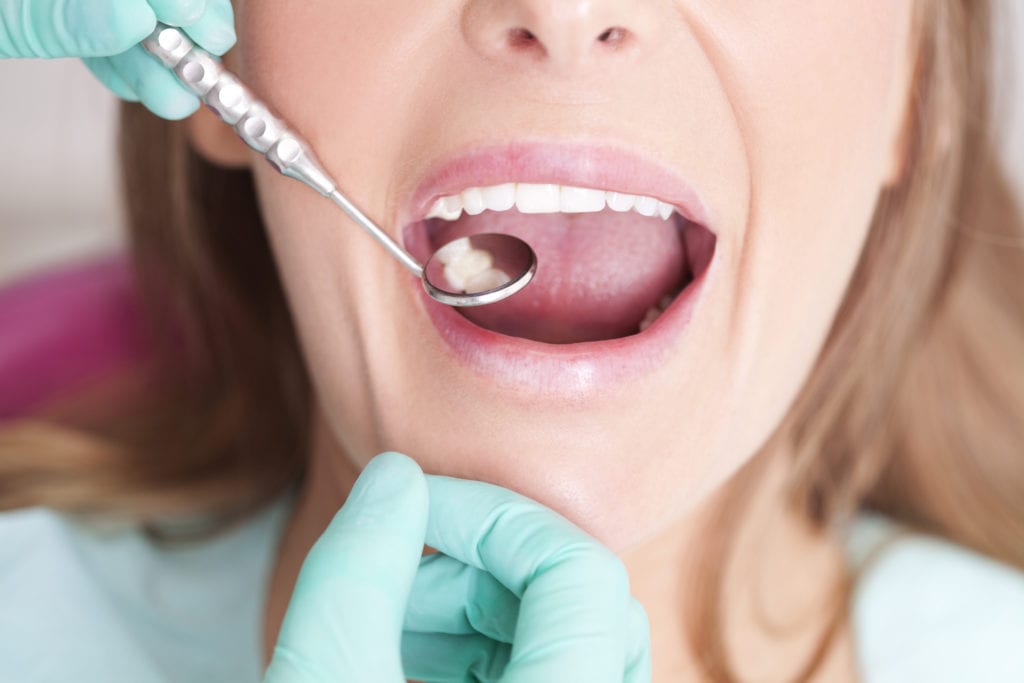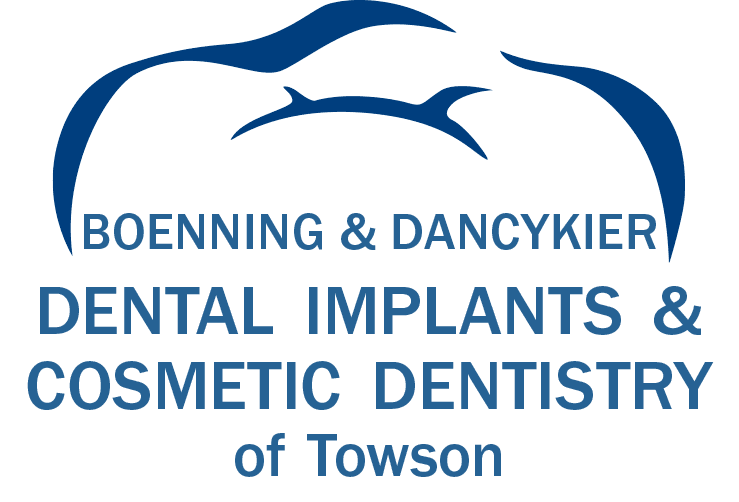Gum disease occurs because of plaque and bacteria buildup on and between the teeth. An overabundance of bacteria can lead to gum irritation. As gum disease or periodontitis progresses, the gum tissue recedes and compromises the stability of teeth. In severe cases of periodontitis, patients can even lose their teeth.
Dr. Keith Boenning and Dr. Nathan Dancykier are dentists that offer treatment for periodontal disease in Towson, MD.

Risk Factors of Gum Disease
Multiple factors make some patients more prone to developing gum disease than others. These factors include:
- Poor Oral Hygiene: Daily brushing and flossing and regular dental cleanings and exams help remove plaque and bacteria that cause gum disease. Patients are more likely to develop gum disease if they skip brushing or do not visit the dentist regularly. Common early signs of gum disease include bleeding gums and irritation.
- Misaligned Teeth: It’s more difficult to clean between crooked and misaligned teeth. Plaque can build up in hard-to-reach areas and lead to periodontitis.
- Smoking and Tobacco Products: Smoking slows the amount of oxygen in the blood. Smoking also slows the delivery of nutrients to the soft tissue in your gums. Using tobacco products or smoking prevents your body from effectively fighting off potential gum infections.
- Dry mouth: When the mouth does not produce enough saliva, it becomes a breeding ground for bacterial growth. Certain medications or medical conditions may cause dry mouth. Dry mouth can also lead to bad breath.
Gum Disease Treatments
We may recommend one or more of these treatments to treat mild to severe forms of periodontitis:
- Scaling and Root Planing: Scaling cleans beneath the gums for a deep clean. The goal is to remove all the plaque and tartar that have built up. These substances harbor bacteria that cause infections. Root planing smooths down the root portion of the teeth. This part of the procedure will help the gums reattach to the teeth.
- Pocket Reduction and Osseous Surgery: If your periodontal pockets are too deep to clean with scaling and root planing, we recommend a pocket reduction. This gum disease treatment will help ensure that our dentists thoroughly clean your gums. Periodontists often preform Osseous surgery in tandem with pocket reduction surgery. This type of surgery helps to smooth down the jawbone so the gums can easily reattach.
- Gum and Bone Grafting: To create a healthy and fuller gum line, we recommend gum grafting. This is necessary to protect the teeth roots. Leaving them exposed allows bacteria to penetrate the roots, which can cause tooth loss. Severe gum disease can cause the jaw bone to deteriorate. Bone grafting is sometimes necessary to restore bone mass missing in the mouth and helps restore strength to the jaw. We may suggest this procedure for dental implant patients who need more bone density to support the implant fixtures.
Periodontal Disease Treatment FAQs
Your treatment for gum disease is dependent on how severe you have it. We offer several treatment options for patients at various stages of periodontal disease. To learn more about this disease and the treatments we offer, start by reading through our frequently asked questions.
How painful is the periodontal treatment?
Periodontal treatment is not painful. This will depend on the complexity and severity of the condition your dentist or periodontist will treat. Generally speaking, periodontal treatments are not particularly painful; however, certain surgical procedures may cause some discomfort. Your dentist or hygienist will do their best to ensure you are as comfortable as possible during treatment.
How long does it take to treat periodontal disease?
The time your dentist needs to address periodontal disease depends heavily on the stage of your periodontitis. Later stages of gum disease will require more time to get the infection under control and repair the damage. In contrast, it’s easier to treat the early stages of infection and get your gums healthier.
What lifestyle changes should I make after undergoing periodontal disease treatment?
Maintaining good oral hygiene habits and visiting your dentist regularly for check-ups ensures gum disease does not return. You should also follow a healthy diet, quit smoking if you are a smoker, and reduce stress as much as possible. You can also take antibiotics to help your gums recover. While dentists are not able to cure periodontal disease, our dental team will help you manage it effectively.
Does periodontal disease treatment hurt?
The level of pain and discomfort someone feels from periodontal disease treatment varies from patient to patient. Regardless, most dentists desire that patients are comfortable during any procedure performed in the dental office. Periodontists focus on providing proper anesthetics and sedation during periodontal disease treatments if needed. This includes treatments such as scaling and root planing, pocket reduction surgery, or crown lengthening procedures.
Does periodontal disease go away after treatment?
Periodontal disease has no cure at this time. However, if you have it, you can manage it effectively. Our dental team can regularly monitor your mouth with visits every three to four months instead of every six. We will help you keep the condition under control between appointments.
How do scaling and root planing help treat periodontal disease?
Scaling and root planning are two of the most common treatments for periodontal disease. During scaling, our dental team will thoroughly clean your teeth below the gum line. We will remove both plaque and tartar buildup that can lead to infection and inflammation.
During root planing, we smooth out any rough spots on your enamel, around the gum line. Bacteria has less of a chance of taking hold and causing an infection. You can do this treatment alone or in combination with other therapies, depending on the severity of your condition.
Book your Appointment for Gum Disease Treatment in Towson, MD.
If you are looking for gum disease treatment in Timonium and Towson, Maryland, call Dr. Keith Boenning and Dr. Nathan Dancykier at 410-324-2294. Request an appointment with our dentists on our website. We look forward to helping you restore your gums, mouth, and smile.
